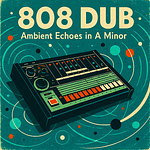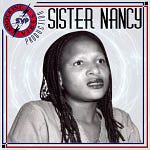The Rise of Rub-a-Dub: A Deep Dive Into Jamaica's Revolutionary Sound
Rub-a-Dub is more than just a reggae style — it represents a turning point in Jamaica's music culture. Emerging in the late 1970s, Rub-a-Dub paved the way for modern dancehall and enormously influenced music scenes worldwide, from hip hop to electronic dub.
What is Rub-a-Dub?
Rub-a-Dub refers to a stripped-down, bass-heavy, echo-laden style of reggae that emphasized the deejay (or "toaster") rhyming over instrumental versions of popular riddims. It grew organically out of Jamaica's dancehall scene, where sound systems would play exclusive "versions" of songs, leaving space for live MCs to engage the crowd.
Unlike roots reggae, which often carried profound spiritual and political messages, Rub-a-Dub focused on the vibe — making people move, dance, and respond. It was raw, playful, and highly interactive, often improvisational.
Bass Culture: Music, Production & Stories from Dubmatix is a reader-supported publication. To receive new posts and support my work, consider becoming a free or paid subscriber.
Key Recording Studios Leading the Rub-a-Dub Charge
Several legendary studios helped birth and shape Rub-a-Dub:
Channel One Studios — Known for its heavyweight riddims and slick engineering. Many of Rub-a-Dub's defining riddims were recorded here.
King Tubby's Studio — The master of dub, Tubby created the stripped-down mixes perfect for DJs to toast over.
Studio One—Coxsone Dodd's legendary studio produced many of the original riddims that DJs versioned during Rub-a-Dub sets.
Harry J Studio and Joe Gibbs Studio also played vital supporting roles.
Key Backing Bands
Rub-a-Dub wouldn't have had its deep, hypnotic grooves without these incredible session bands:
Roots Radics Band — The quintessential Rub-a-Dub band, crafting minimal, bass-driven riddims.
Sly & Robbie (The Riddim Twins) — Master bass and drum duo who defined countless sessions.
The Aggrovators — Bunny Lee's studio band, foundational in many early Rub-a-Dub recordings.
Soul Syndicate Band — Another powerhouse backing group behind many big hits.
Playlist:
Eek-A-Mouse — A Wha Do Dem (1979)
Johnny Osbourne — Ice Cream Lover (1979)
Thriller U, Jah Thomas & Ranking Toyan — Entertainment (1979-80)
John Holt — Police In Helicopter (1983)
Ranking Joe — Burial (1979)
Charlie Chaplin — Telephone (Chalice) (1980)
Papa Tullo — Every Half Is A Fraction (1979-80)
Captain Sinbad — Fisherman Style (1982)
Wayne Jarrett — Saturday Night Jamboree (1981)
Michael Prophet — Gunman (1980)
Cornell Campbell — Boxing Around (1979)
Junior Reid — Oh Happy Day (1981)
Little John — Dancehall Style (1981)
Black Crucial — Conscience Speaks (1980)
Frankie Paul — Worries In The Dance (1983)
Rub-a-Dub set the template for modern reggae, dancehall, hip hop, and electronic bass music. It was a grassroots, people-driven movement emphasizing creativity, improvisation, and community through music and dance.
Today, its influence can be felt in every sound clash, every DJ set featuring heavy riddims, and every MC who knows how to ride a beat with style and confidence.
Rub-a-Dub lives on — in the dancehalls, the dubplates, and the hearts of music lovers worldwide.













Share this post